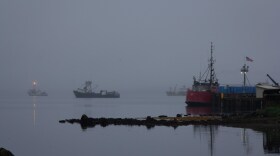Alaska has finally regained the jobs it lost during the COVID-19 pandemic. A new report from the Alaska Department of Labor and Workforce Development shows the state has rebounded in jobs and wages, which have lagged behind the national average.
The study’s author, Karinne Wiebold, says it took Alaska a year or so longer to get back to full employment levels than it did for the nation as a whole..
According to the study, jobs rose 2% in Alaska in 2024. Wages climbed 7%, outpacing inflation.
“2024 was kind of an important year for the state, because that's the year that we have fully recovered from our Covid losses,” Wiebold said.
Each year, the labor department gets data from Alaska employers through the quarterly employment and wages census, which helps it compare trends in different places and in different industries.
Regions with oil and mining projects saw the biggest gains, while tourism hubs held steady. That’s the good news.
The bad news is that the state’s seafood industry hasn’t been so lucky. It’s the only industry that lost both employment and wages in 2024.
“Seafood processing, and by extension fishing, saw a lot of disruptions throughout the industry, so we had a lot of losses,” Wiebold said.
Statewide, seafood processing lost about 1,000 jobs, about a 13% drop. Wages fell by 17%.
The Aleutians East Borough saw the state’s steepest job losses.
“When we look at the Aleutians East area, which is heavy on seafood processing, the jobs went down nearly 25%,” Wiebold said. “Total wages fell about the same.”
The borough accounts for about half of the seafood processing jobs that were lost statewide — losses that line up with the closure of the Peter Pan Seafood Co. plant in King Cove.
“All of the losses in Aleutians East basically, were kind of isolated in seafood processing,” Wiebold said. “That's where about 500 jobs were lost.”
In King Cove, those losses are being felt outside the seafood industry, too. The Peter Plan plant generated about 70% of the city’s revenue.






